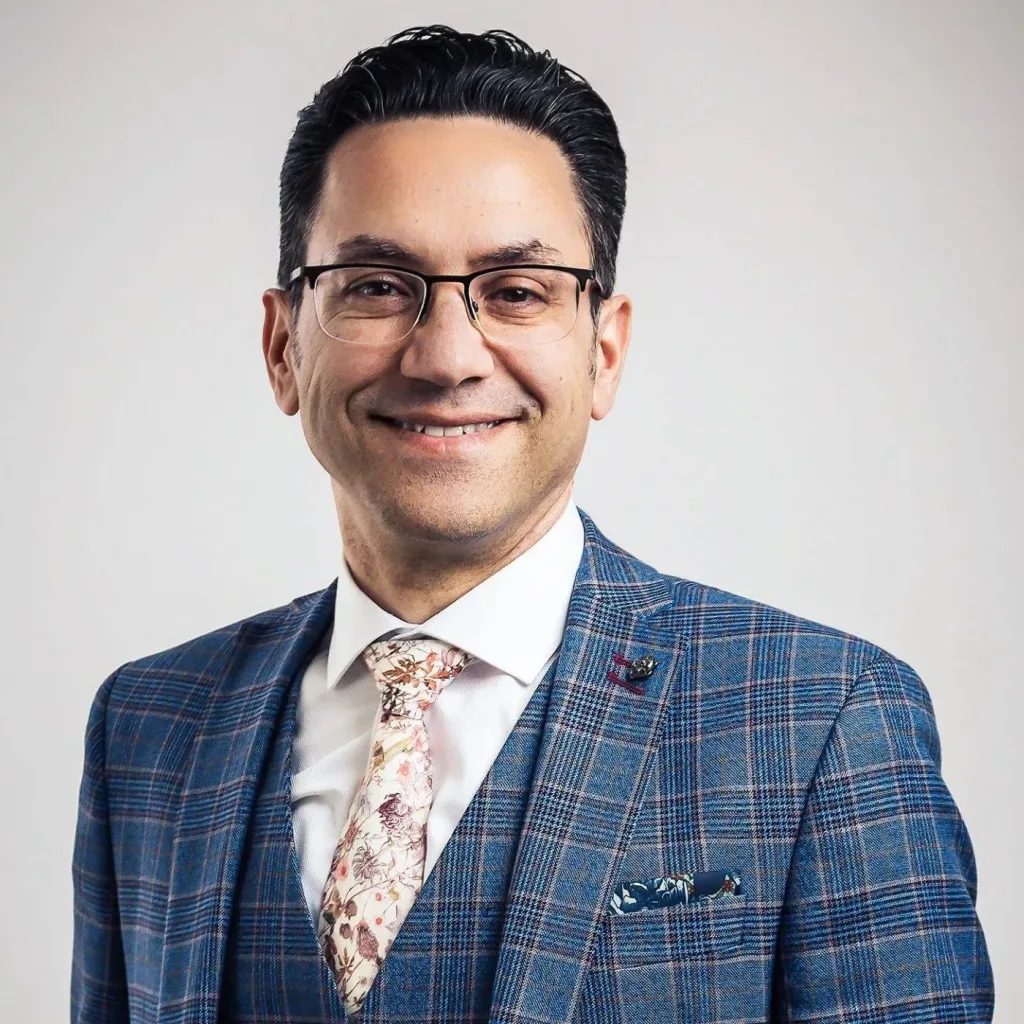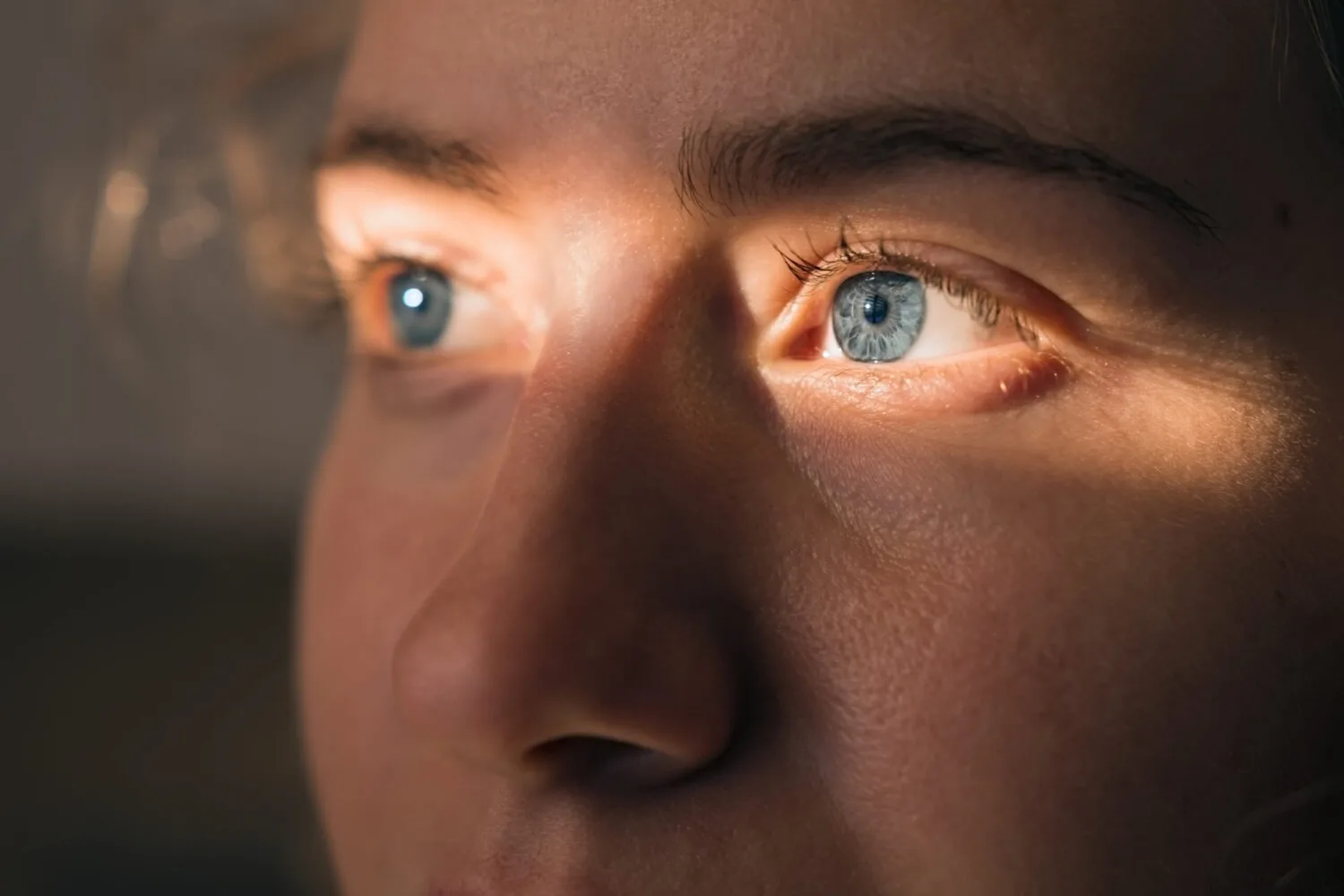To understand how long dermal fillers last, we must take into account multiple factors, such as the type of filler used, area(s) treated and variations in individual metabolism. Dermal filler can be used to improve the shape of the jaw, remodel the nose, fill out tear troughs or enhance the appearance of the chin, and filler in some areas can last longer than in others.
This blog will explore the different applications of dermal filler, and how long the results will last.
At the CREO Clinic we are home to a doctor-led aesthetics team who understand how to make targeted, natural-looking adjustments using dermal filler. In the hands of our team you can feel confident that you will receive the highest quality care and excellent cosmetic outcomes.
Discover how our team of dermal filler specialists can help you achieve your cosmetic goals.
Types of Different Dermal Fillers Available
At the CREO Clinic we work with hyaluronic acid filler – this is because it is effective, safe, consistent in its results and reversible. Other types of filler lack reversibility, whereas hyaluronic acid can simply be dissolved using hyaluronidase in cases where a patient changes their mind or wishes to make adjustments.
Treatment Areas for Dermal Fillers
One of the key benefits of dermal fillers is their capacity for enhancement in multiple areas around the body. On the face, dermal fillers can be used to make improvements to marionette lines, the lips, nose, cheeks, chin, tear troughs and jaw line. Filler can also be used to enhance the appearance of the buttocks, as well as the breasts.
Other areas, such as the backs of the hands, can be treated with dermal filler or fat transfer as a way to rejuvenate the skin and reduce visible signs of ageing.
Are Dermal Fillers Safe?
Yes, when performed by an experienced Aesthetic Doctor, dermal fillers are a safe, non-invasive treatment. Choosing an experienced practitioner will help reduce the possibility of complications such as asymmetry or vascular occlusion, and will help safeguard your well-being and the quality of your final results.
Expected Timeline For Dermal Filler Results
When you can expect your dermal filler results will depend on the areas being treated. In some areas you are more likely to see swelling and bruising, and as such it can take more time for the filler to settle. Consult the below table for time frames of swelling and bruising:
| Area | Time |
| Lips | 7-10 days |
| Tear trough | 7-10 days |
| Chin | 3-5 days |
| Jaw | 3-5 days |
| Nose | Almost none (7-10 days for bruising, but this is unlikely) |
Factors Influencing the Longevity of Dermal Fillers
There are multiple factors that have an influence on the longevity of your dermal fillers, including:
- Type of filler – There are many different types of filler, each with different qualities that impact longevity.
- Area treated – Dermal filler can break down more slowly some areas of the body than others, so where your filler is applied plays a role in its longevity
- Your metabolism – Dermal filler is gradually broken down by the body, but timeframes can vary from patient to patient depending on their metabolism
- Quantity of filler – The amount of filler injected will affect the time it takes for the filler to break down. More filler will take longer to metabolise
- Technique used – There are a variety of techniques that can be used to apply dermal filler. Our aesthetic doctor will choose the technique that optimises both results and longevity
Who’s a Good Candidate For Dermal Fillers?
The ideal candidate for dermal fillers is:
- Over the age of 18
- Interested in enhancing certain physical features, such as the jawline, cheeks or lips by adding small amounts of volume
- In good physical and mental health
- Interested in avoiding surgery
- Hoping to trial an aesthetic change before undergoing a permanent surgery
- Realistic about dermal filler results
Who’s Not a Good Candidate?
Pregnant people or people with allergies to hyaluronic acid or albumin will not be good candidates for dermal filler injections. Certain medical conditions will also rule candidates out from the treatment, but these will be assessed during your initial consultation and the review of your medical history.
Benefits of Getting Dermal Fillers
Targeted dermal fillers can bring an array of benefits to patients:
- Improve contour and shape – Dermal fillers can target areas that are asymmetrical or lacking in contour and directly improve their appearance.
- Reduce wrinkles – The application of dermal fillers can smooth out the skin and reduce the appearance of fine lines and wrinkles caused by ageing.
- Enhance volume – Certain areas can be given a boost in volume with dermal fillers – the lips, under eye hollows and cheeks can all be given a fuller appearance.
- Immediate impact – The transformations made with dermal fillers can typically be seen immediately after injection, allowing you to enjoy the changes to your appearance straight out of the clinic.
- Reversible – The availability of hyaluronidase – a filler dissolver – means enhancements made using dermal filler can be altered or reversed completely.
- Minimal recovery time – In contrast to surgical options, dermal filler requires very little recovery time, meaning you can return to work and the rest of your daily routine immediately after the procedure.
Dermal Fillers Treatment Overview
Initial Consultation
Your initial consultation will consist of a discussion with one of our specialists about your aesthetic goals and your suitability for dermal filler injections. Our team will assess your medical history and goals, then tailor a bespoke treatment plan to meet your needs.
We encourage all patients to use this opportunity to ask any questions you may have about your treatment.
Dermal Fillers Treatment
The injection of dermal fillers can typically be performed on the same day as the consultation. A precise series of injections are made in different places across the treatment area so that the filler spreads evenly and symmetrically. Topical anaesthetic can be applied to the treatment areas to prevent any discomfort during the injections, but patients report that the level of pain is no more than the typical ‘pinching’ sensation experienced during an injection.
Depending on the area(s) type of treatment, different types and amounts of filler can be used. Also, different techniques may be used to administer your filler–
Our aesthetic team is experienced in all of these techniques and will decide which of them will be most appropriate for your needs during your consultation.
Recovery and Aftercare Process
Downtime after the application of dermal fillers is typically minimal, but bruising, swelling and bleeding may occur for a period between 3-10 days depending on the area.
After your application of dermal filler we recommend avoiding excessive heat for at least 48 hours after your injections and avoiding alcohol or make up for the first 24 hours – this will help minimise swelling inflammation and promote healing. Also Steer clear of other treatments such as skin peels or other injectables for 1-2 after the treatment, and avoid sleeping on your face for two weeks minimum.
Before and After Results
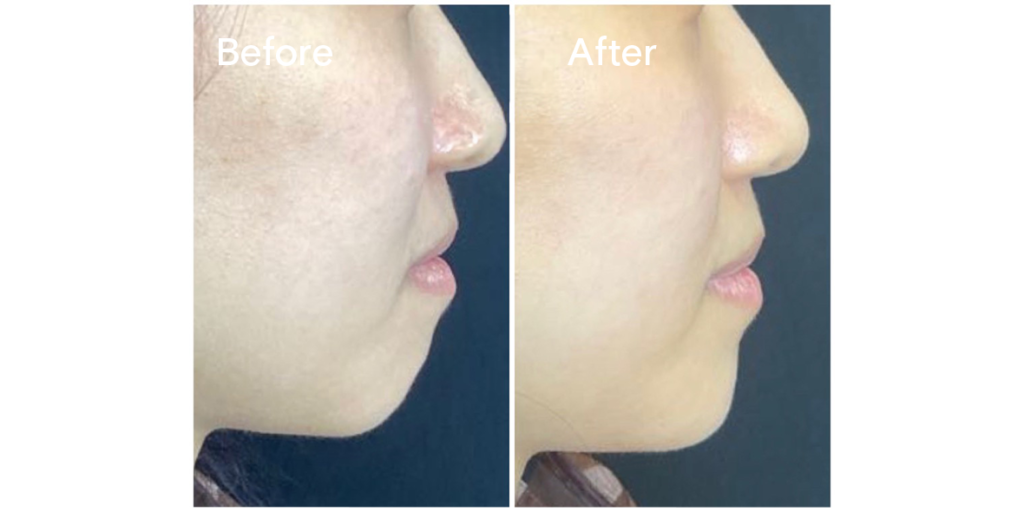
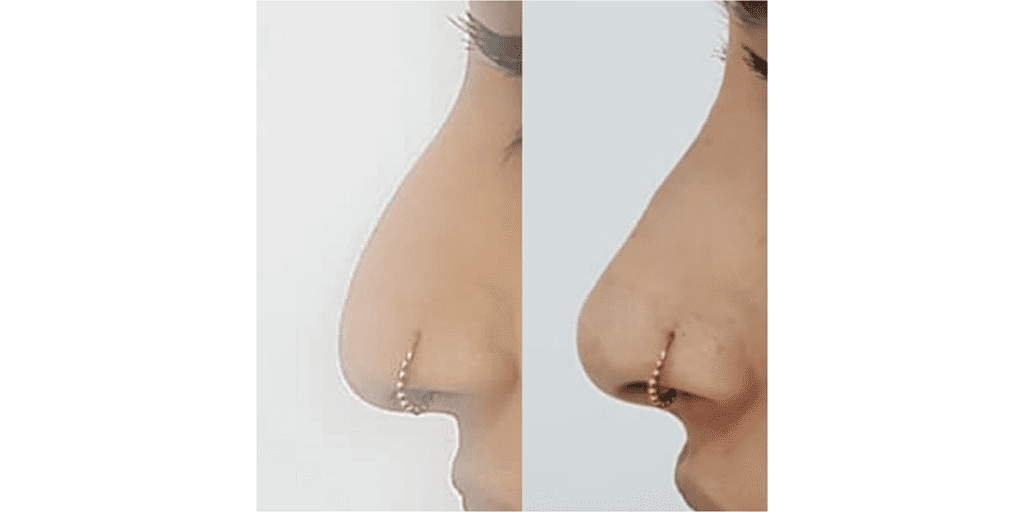
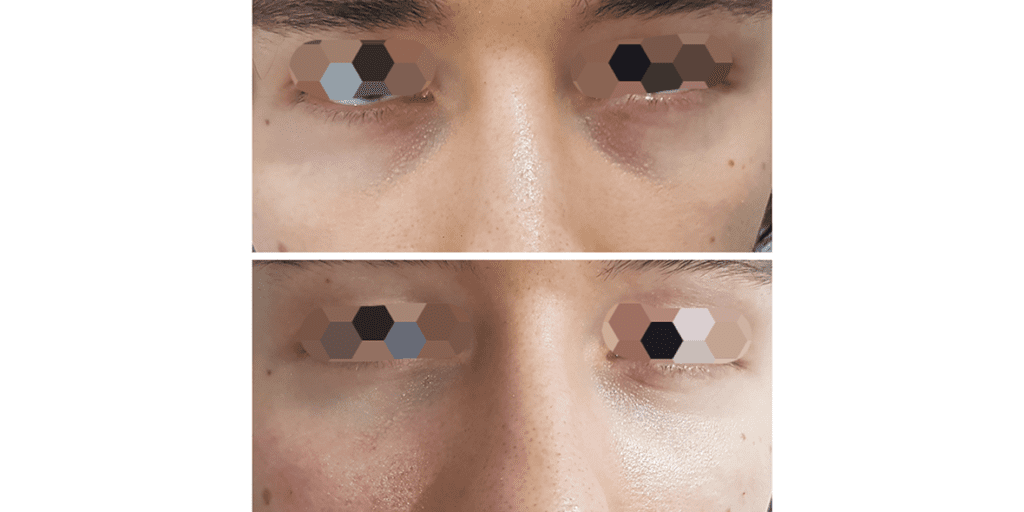

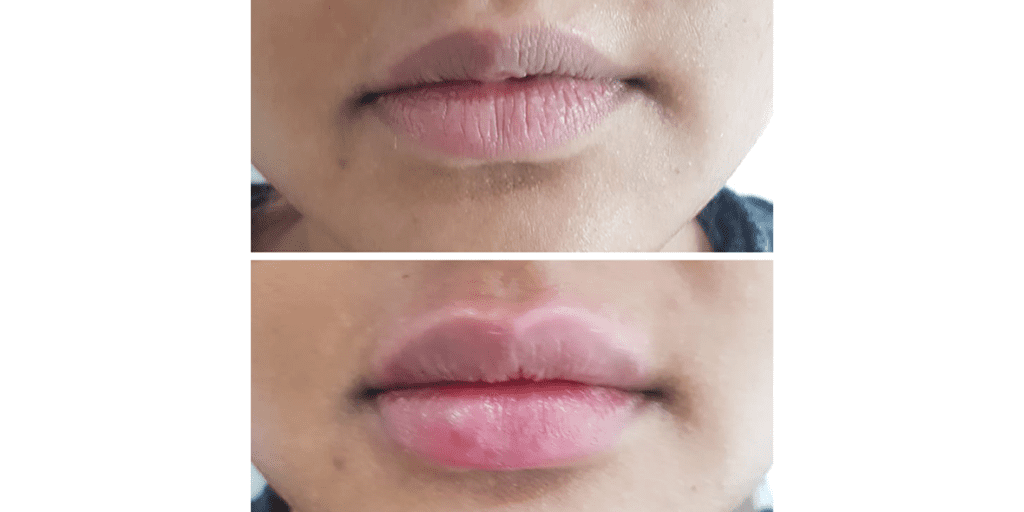
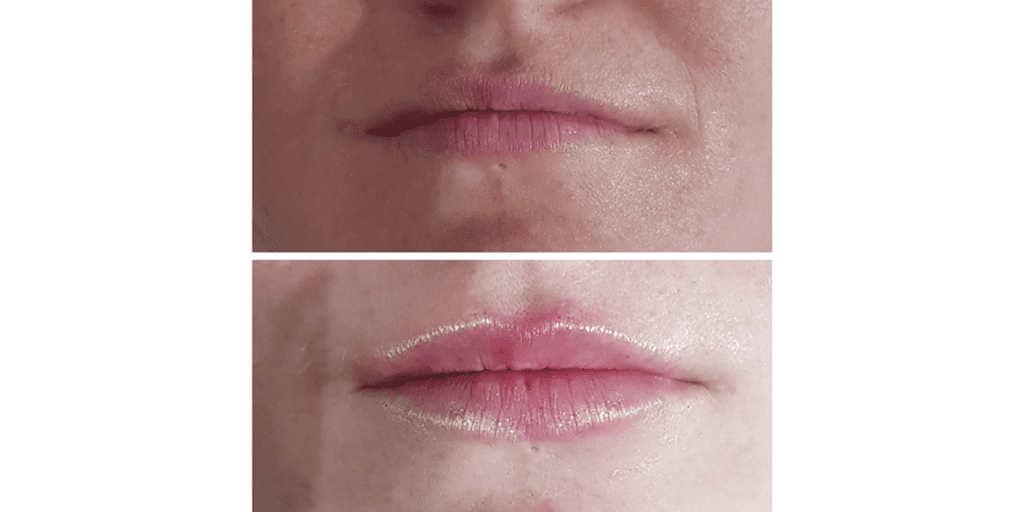
What If You Don’t Like the Results?
It is important to remember that dermal filler application is completely reversible – if you don’t like your results, you can adjust them or remove them completely using the filler dissolver hyaluronidase.
Potential Side Effects With Dermal Fillers
Common side-effects from dermal fillers are bruising and swelling at the injection sites. Other complications such as vascular occlusion – the blockage of blood vessels preventing the flow of blood around the body – are far rarer, but great care should be taken to ensure that such complications are avoided. The best way to reduce the risk of complications is to choose an experienced team of cosmetic practitioners with a proven record of safe, high-quality treatments.
How Do Dermal Fillers Compare to Other Treatments?
There are many other nonsurgical treatments that can improve the appearance of the face, or be used to complement dermal fillers. For example:
- Fotona 4D facelift – A four step laser treatment that combines Er:YAG and Nd:YAG lasers to combine skin tightening, skin resurfacing and targeted improvement to pigmentation blemishes to create a full facial rejuvenation. It can improve the appearance of fine lines and wrinkles and help your skin appear youthful and refreshed, with a more comprehensive effect than targeted dermal filler.
- Anti wrinkle injections – Targeted injections that relax muscles in the face to reduce the appearance of dynamic and static wrinkles. They are highly effective at smoothing out the skin and but also help prevent new wrinkles appearing. These injections can complement the volumising effect of dermal fillers.
- Profhilo – A hydrating hyaluronic acid injectable that works to improve skin hydration and stimulate the production of collagen and elastin. Profhilo can has many benefits, transforming skin texture and elasticity, whereas dermal filler typically provides volume and wrinkle reduction.
- Exosomes – A deep skin rejuvenation treatment that works by stimulating the body’s own collagen, elastin & hyaluronic acid production for healthier, glowing skin.
Dermal Fillers FAQs
Are you ever too old for dermal fillers?
What happens when dermal fillers wear off?
Are dermal fillers worth it?
How many sessions will I need?
Is there expected downtime after getting dermal fillers?
Does dermal filler treatment hurt?
How long does a dermal filler treatment session last?
Contact CREO Clinic For Professional Dermal Filler Treatment
Our practitioners are experienced in the artful application of dermal fillers, and can make transformative enhancements to your appearance with precise, non-invasive injections of filler.
Contact the CREO Clinic today to speak with our doctor-led cosmetic team about your aesthetic goals.
